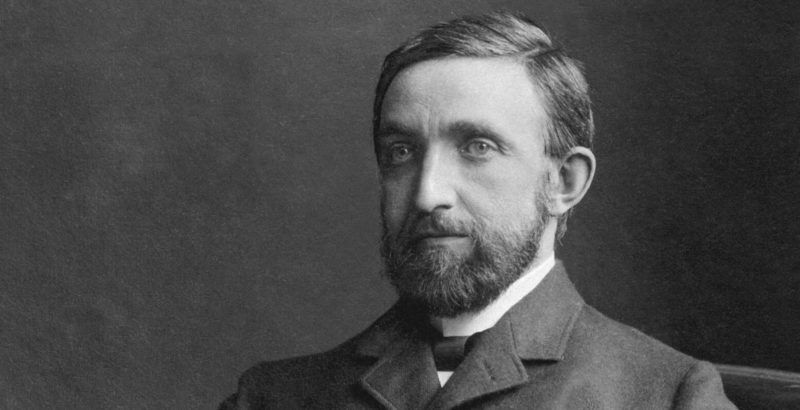We explain what radio is, how it works and the types that exist. Also, what are its characteristics and why is it important.
What is radio?
Radio is a concrete application of a larger technology , known as radio communication . This technology is used, for example, by merchant ships or warplanes to send and receive signals on an open frequency. But specifically, radio is the civil, informative and entertainment use of radio communication.
We should not confuse what refers to radio with the chemical element radio (Ra) , nor with the geometric concept radio (of a circumference). However, its name comes directly from the first case, since a small stone of said element was used in the manufacture of the first devices.
Discovery of electromagnetic waves

James C. Maxwell discovered electromagnetic waves and how they were generated in the 19th century, observing that changing electric fields created changing magnetic fields and vice versa. Maxwell exposed in 1873 the result of his experiences on the matter in the previous decade before the Royal Society of London and this was the first antecedent of the radio.
Heinrich R. Hertz confirmed Maxwell's theories in 1888 . He discovered how to artificially create these electromagnetic waves and how to detect them, using an apparatus of his manufacture that used two metal bars of the same size, aligned and culminating in metal balls, in each of which electrons were injected at very high voltage extracted from the other.
Using this apparatus, Hertz showed that waves could be reflected, deflected, polarized, etc. This was because they were moving close to the speed of light , and had characteristics similar to it (wave characteristics). This was the foundation for sending radio signals.
In tribute to their discoverer, these waves are called “Hertzian waves ”. The name “radio” only came into use 20 years later. Many scientists and inventors, such as Nikola Tesla or William Crookes studied this new phenomenon and proposed applications and uses. Some already perceived the potential it would have in telecommunications.
The first hertzian wave transmission took place on Christmas Eve 1906 , with a high frequency electromagnetic alternator generating amplitude modulated (AM) waves and transmitting the voice of Reginald Aubrey Fessenden singing a Christmas carol from Brant Rock Station, Massachusetts.
Invention of Radio

The first radio in history was invented at the beginning of the 20th century , but its authorship is in dispute between the Serbian Nicola Tesla and the Italian Guglielmo Marconi. The latter is known to have built the first commercially successful complete wireless telegraphy system, transmitting hertzian waves through the air.
However, it is believed that the radio itself was an invention of Tesla that, through legal litigation, was taken from him by Marconi, who demanded compensation from the US government for having used his technology during the First World War without paying patent rights. .
However, subsequent inventions during the first half of the century such as the triode (electric amplification valve) , wave modulation valves or the superheterodyne allowed the use of radio as we know it.
Among the first entertainment broadcasts is the one made in Argentina in 1920, with the opera Parsifal by Richard Wagner, transmitted from the roof of the Teatro Coliseo in Buenos Aires .
Radio History
The history of modern radio is the product of numerous technological convergences , such as the discovery of Frequency Modulation (FM) as a replacement for Amplitude Modulation (AM) in 1933, the use of transistors in radios in 1950, and a number of other considerable improvements.
Radio revolutionized the world of communications and entertainment and paved the way for the 1948 arrival of television , employing similar transmission mechanisms.
From then on, radio slowly lost ground to television , being used in the military through special channels, or through LORAN, the first radio navigation system. The next step, the digitization of radio, took advantage of new technologies made possible by the Internet in the latter part of the 20th century.
On the other hand, the influence of satellites added quality, speed and power to the radio, among other new possibilities. Today Internet radio is very common, as well as radio broadcasting among radio amateurs or local use for walkie-talkies .
How does the radio work?

The radio works like any communication mechanism , mediating between a transmitter and one or more receivers, which do not share a location, and communicate without seeing each other, thanks to the transmission of electromagnetic waves in the air . Said communication can be reciprocal only in certain cases in which the sender and receiver exchange their roles in turns.
A radio receiver is a device that uses an antenna to capture electromagnetic waves in a certain amplitude and frequency. From them it obtains a minimum electrical charge that is filtered and separated by the electrical circuit inside the device, managing to distinguish between different wave frequencies (each one assigned to a radio station, normally).
Finally, the electrical charge is transmitted to a speaker or loudspeaker that converts it into sound waves perceptible by the ear.
On the other hand, an emitter operates in a similar but reverse way . A radio transmitter captures sound waves through a microphone, converting them into a series of electrical impulses that are emitted as a series of electromagnetic waves at a given frequency and amplitude.
These waves start from the transmitting antenna and travel through the air or space in all directions and at a speed very close to that of light.
Radio Types
Three types of radio receivers are known:
AM receiver:
Amplitude Modulation receivers are the simplest and cheapest, and are used for radio, airport communications or for commercial entertainment purposes, although their frequency ranges from 500 to 1700 kHz. It is easy to decode and consists of a stable variation of the amplitude of wave currents, as its name indicates.
FM receiver:
Frequency Modulation receivers work with the frequency of the waves, instead of their amplitude, which provides numerous advantages, such as greater fidelity or the possibility of eliminating unwanted signals, since the amplitude is constant in the waves. Most commercial open use signs are of this nature.
AUB receiver:
Incorporated when digital audio transmission became possible, it is the most innovative type of receiver, employing a single frequency network, with high quality sound signals and compensation for environmental distortions.
Radio Broadcasts

The radios of the different cities and countries are constantly broadcasting messages , along a programming grid that varies according to the interests and profiles of the broadcasters, like any other means of communication.
Each communicative segment is called broadcast and is usually live, that is, happening instantly. However, at the same time they are usually recorded and played later to give the public another opportunity to listen to them.
Each broadcast has a responsible team , within which are radio technicians, musicians and announcers. In many cases there are guests, phone calls that are linked to the content of the broadcast, and other radio resources.
Radio Genres

There are several types of radio broadcasts according to their content:
- journalistic or informative Those that seek to inform, transmit messages of importance to listeners or content that may be of interest, such as reports , chronicles , latest news , debates , interviews , etc.
- Of entertainment. Those that offer various branches of non-journalistic programming, such as music , radio soap operas, etc.
Importance of Radio
The radio forever revolutionized the world of communications with a new “wireless” technology, that is, without cables of any kind, transmitted through the air and even in the vacuum of space. Thus it supplanted the telegraph and its derivatives. The commercial, military and practical applications of it were and are very numerous.
In addition, the invention of the radio paved the way for other equally revolutionary inventions , such as television or Wi-Fi transmission of the Internet, or radio location and radar.
Internet Radio
Internet radio is a recent phenomenon, but highly in demand . There are numerous digital stations that transmit to any device connected to the computer network ( cell phones , computers, etc.).
In some cases, they allow the download of their broadcasts to listen later . Podcasts stand out among this type of broadcast , radio programs recorded in the traditional way, but designed to be heard on a delayed basis.
Main international radios

Some of the main international radio stations in the world are:
- BBC London ( England )
- Radio France International ( France )
- Spain Radio International ( Spain )
- Radio China International ( China )
- Radio ABC–Dig (Australia)
She has pursued her studies in The United States, where she has graduated in Business and Economics and is currently finishing her Master studies in International Economics and Finance. Miss. Amputee is fluent in three languages: English, Spanish and Russian and has elementary knowledge of French and Italian. She love exploring how Collaborative Research Group can become the best tool to achieve the (necessary) educational change. .
Leave a reply
Your email address will not be published. Required fields are marked *Recent post

Sport: What Is It, Types, Risks, Features, Characteristics and Examples

Dogs: Emergence, Features, Characteristics, Feeding and Breeds

Story: Definition, Elements, Structure, Features and Characteristics

